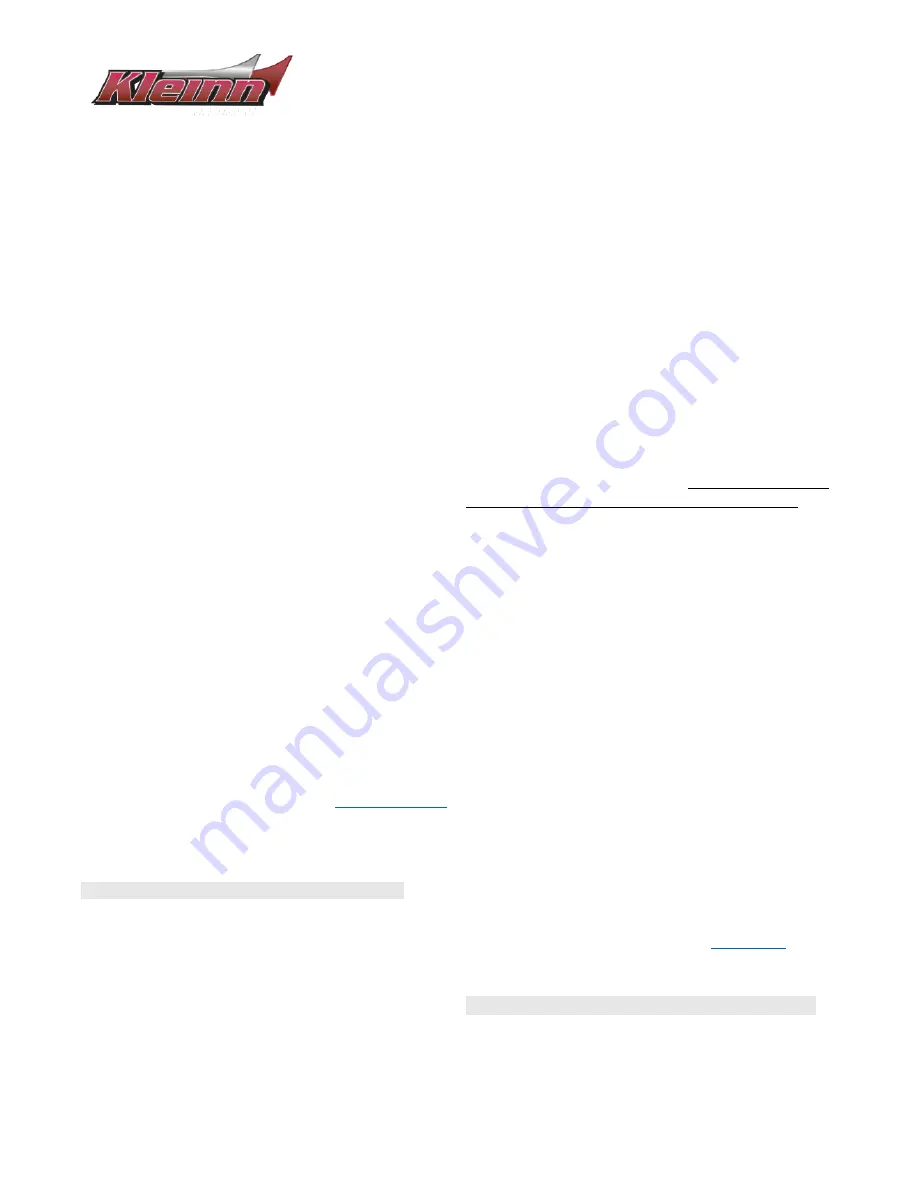
RPTR-OBA/734
Installation Manual
REV: B (04/25/2022)
39
11
General Operation
11.1
Compressor Operation
WARNING
: NEVER operate the air compressor above its
MAXIMUM PRESSURE RATING (see label on body). Operation
exceeding maximum pressure will damage the compressor
and potentially cause air system failure.
1.
Kleinn’s oil-less compressor is equipped with an
automatic thermal overload protection circuit
designed to protect the air compressor from
overheating and causing permanent damage.
2.
Automatic thermal overload protector will reset
after 30 minutes.
3.
To prevent discharge of the vehicle’s battery,
and for best performance, keep the vehicle’s
engine running while using the air compressor
for any prolonged use (i.e., filling tires, using air
tools, etc.).
11.2
Horn Operation
1.
Allow the air compressor to run until it shuts off
automatically, (i.e., air tank is full) or for at least
one minute between horn activations.
2.
Press the horn button to activate the horns
3.
Horn sound/loudness will taper as the air tank
pressure decreases.
4.
Horns should sound for 3-7 seconds depending
on kit and tank size.
WARNING
: NEVER operate train horns with ears near
trumpets or in an enclosed space without
(i.e., > Ear Plugs/Muffs) for all persons closer than 100 feet
from vehicle. Never operate train horns outdoors when
persons are near vehicle without hearing protection.
END OF SECTION
12
Routine Maintenance
Perform following maintenance at least once during
recommended intervals:
1.
Yearly, or every 12,000 miles, verify all mounting
fasteners are properly torqued. Applying witness
marks across fasteners and mounting parts is
good practice to quickly ensure fasteners have
not moved.
2.
Yearly, or every 12,000 miles,
inspect OE wiring,
tubing, cables, etc.
where kit parts may touch to
verify no abrasion or rubbing.
3.
Yearly, or every 12,000 miles, remove all road
grime and mud from the mounting brackets and
kit parts using clean water from a garden hose.
Pay special attention to corners where dirt may
collect. Touch up all paint chips using
automotive grade enamel in either spray or
brush form.
NOTE
: Do this more frequently if traveling regularly off-road,
or in winter climates with road salts.
High-pressure washers
may damage part finishes and must be used with care.
4.
Yearly, or every 12,000 miles, check electrical
connections, wires, and air fittings for abrasion,
corrosion, or other damage. Replace damaged
components.
NOTE
: if system runs continuously or turns on unexpectedly,
leaks or a poor electrical connection may be present.
5.
Monthly, or every 10 hours of compressor run
time, drain moisture from the air tank using thee
drain valve installed at the bottom of the tank.
WARNING:
Failure to regularly drain the air tank may result
in corrosion inside the tank and possible failure in the tank or
air tubing, causing injury.
6.
Yearly, or every 12,000 miles, clean or replace
the air compressor air filter element.
Replacement frequency depends on operating
frequency and conditions of environment (i.e.,
daily use requires more frequent changes).
NOTE
: NEVER lubricate or add liquids to the compressor.
END OF SECTION


















